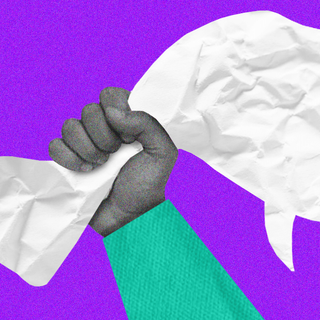
Why Watching Porn May Make Some Women Develop More Body Image Issues Than Others
The researchers used the “attachment theory to [understand] how women develop body image self-consciousness during intimate relations.”

The augmented curves, perfectly chiseled abs, and super-flexible bodies women have in porn are enough to make others self-conscious about their appearance in bed. Since the “ideal” body type promoted by pop culture, the beauty industry, and pornographic videos themselves, is often unachievable — yet aspirational — during sex, women can get lost in the idea that their bodies aren’t “hot” enough, diminishing their ability to be in the moment and enjoy the act.
However, what determines the degree of self-consciousness women experience due to porn, can extend beyond just the shape or size of their own bodies. One of the factors, as a new study found, may be linked to the attachment styles of women.
The attachment theory explores the different ways in which we bond with others and tries to explain why we behave in the different ways we do, in relationships — especially the long-term ones. One of the many attachment styles proposed within the framework of this theory is anxious attachment. It’s also called “preoccupied attachment” because people exhibiting this attachment style tend to get so preoccupied with how they’re being perceived by their partner that they overanalyze everything to a point where they may forget to actually participate actively in the relationship.
Published in the Computers in Human Behavior, the study, based on an online survey of 1,001 women from Israel between the ages of 18 to 56, found that those who exhibit an anxious attachment style have to deal with greater body dissatisfaction and insecurity during sex.
Related on The Swaddle:
How Women’s First Sexual Experiences Shape Their Sexual Desires Later in Life
It seems almost intuitive, then, that they’d also focus more on how their partner is perceiving their bodies. But now, scientists also have the data to support that intuition. “[T]he findings suggest that women may be more susceptible to the influence of pornography use on their body image self-consciousness when they are anxiously attached and in a romantic relationship,” the study notes.
The intensity of the impact can be rather tremendous. Body image issues can also cause people to dissociate during intercourse, preventing them from experiencing sexual pleasure. Finding one’s body “unattractive… leads to lower sexual self-esteem, which then often leads to avoidance of sexual activity. Once one area of the sexual cycle is interrupted often several areas of the sexual cycle are disrupted — desire, arousal, and orgasm,” Laurie Watson, a certified sex therapist, wrote in Psychology Today.
Moreover, shame and anxiety about one’s body can also lead people to avoid physical closeness and experience reduced sexual satisfaction.
In 2011, feminists in Britain marched against porn culture’s fixation on perfectly sculpted vulvas which, according to them, was causing women to invest in gynecological cosmetic surgeries. One of the women, who had sought a similar surgery, had told The Guardian, “I browsed through one of my brother’s Playboy [magazines] to see what the girls looked like. Some seemed to have very small or almost no labia.”
Reportedly, it is porn that has driven society’s obsession with hairless vulvas leading women to not only shave off their pubic hair, which actually protects us from myriad infections, but also, on occassion, end up at emergency rooms courtesy of accidents related to public hair-removal.
Related on The Swaddle:
How Novels Have Shaped Women’s Understanding of Sex in the Absence of Sex Education
A study from 2018 had also found that the frequency of watching porn — including excessive use as well as difficulty in controlling to urge to watch — doesn’t translate into greater body image issues. Using porn as a coping mechanism, however, does — although the researchers weren’t completely sure why. “Women’s pornography use as a dysfunctional coping mechanism was modestly correlated with body image issues and relationship satisfaction issues,” first author Nicholas C. Borgogna, currently an assistant professor of counseling psychology at the Texas Tech University, had said.
In addition, of course, being body-shamed in general exacerbates the self-consciousness the porn culture inflicts on women.
Understanding the impact of porn on the way women perceive their bodies is especially relevant in the Indian context, where porn often becomes the primary source of exposure to knowledge about sex in the absence of sex education in schools. As such, to young minds, porn comes to define what sexual intercourses look like. With most pornographic videos, unfortunately, being geared toward male pleasure, women can begin to perceive themselves as an object during sex, rather than a subject, or an active participant — making them focus more on how their body appears to their partner than on the pleasure they’re physically deriving from the act.
It’s unlikely that feminist porn will define porn culture anytime soon. Until then, studies like the present one that proposes to help people deal with their body image issues by working on their attachment styles, are, perhaps, the only quiver in our arrow against porn’s impact on women.
Devrupa Rakshit is an Associate Editor at The Swaddle. She is a lawyer by education, a poet by accident, a painter by shaukh, and autistic by birth. You can find her on Instagram @devruparakshit.
Related


Music May Be as Beneficial for Mental Health as Exercise, Research Suggests
